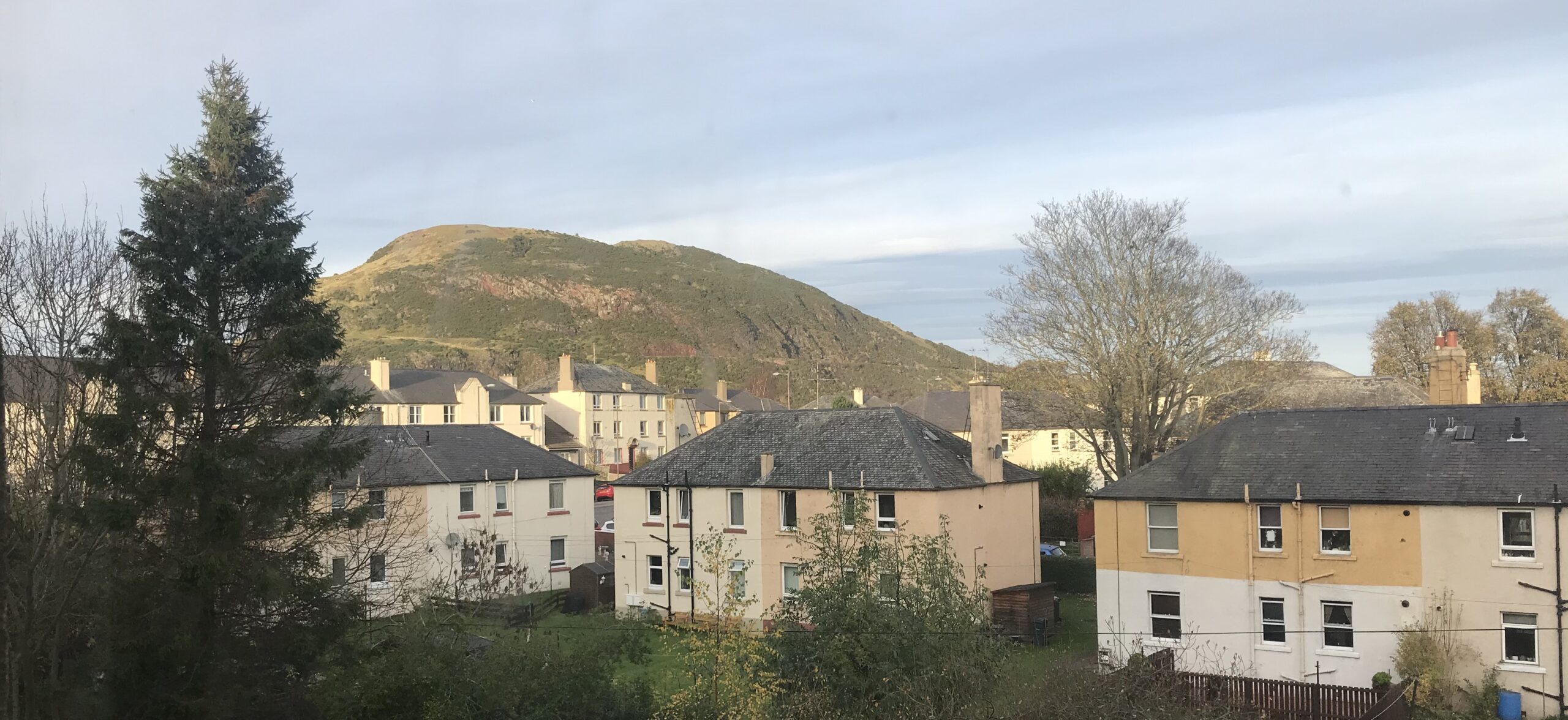
My Arthur’s Seat bedroom view as I write this post. The sunset can be beautiful, if you’re lucky. © Photo by Jennifer Struthers.
It’s been around a month since my first blog post and I feel quite happy to say that some things have changed and I’m on a slightly different path than before, in regards to the project.
I had a meeting with JC and Brian, who are my project supervisors, in order to talk about some of the ideas I had and their thoughts on them.
I had big ideas of creating a video series, which could be watched in the home or at school with fun science experiments full of explosions and reactions, which the child (or adult!) could then recreate. While discussing this idea, a few drawbacks and issues came up.
The first issue being that not all people have access to a computer, the internet, or internet fast enough to run a video in their classroom or home. Growing up in an environment where after 2010 none of these things would have been an issue to me definitely blinded me to the reality that not everyone is as lucky as I am and as I was growing up.
The current situation, with many people relying on laptops and their internet connection in order to receive their education, has shone a light on this issue. I definitely want my project to be as accessible as possible and experiments that require someone to be spending money on equipment they might not ever use again, and might not even be able to access in the first place due to internet speed is not really something I’d want to do.
Thinking about the funding and budget disparities in classrooms led me to do a little research for the figures. A report from the Wellcome Trust in 2017 found that 25% of teachers are concerned they may not be able to answer children’s questions about science, and on average science is only taught for 1 hour 24 minutes each week. Another report from the Confederation of British Industry in 2015 found that 53% of primary teachers believe that teaching science had become less of a priority in the last five years. These were good things to consider when trying to decide what kind of resource I should be making.
Another issue is that sitting a group of kids down to watch a video, and then getting them to repeat exactly what’s in the video isn’t teaching them a lot or getting them to learn for themselves. Ideally I want to create something that’s not just fun to recreate, but also has the participants think through things and learning, instead of passively copying things they have read on a board or computer screen.
My last issue, it’s not extremely innovative. If you Google “kids science experiments”, there are 900 million results, with 70 million of them being videos. If a teacher or parent wanted to have a class where they show a video and have the children repeat the experiment, there are literally millions of videos to go for.
However, JC had a suggestion. He send me a DropBox folder full of pictures and resources for a Harry Potter themed day he had hosted at multiple venues, for adults and children, and asked me if I’d be interested in developing them for the classroom or for home use.
The resources were full of Harry Potter experiments and activities, pretty similar to the type of experiments I had been wanting to do in the first place, so I said yes. I went away and wrote a rough draft for 4 lesson ideas, careful that any resources needed could be easily found in the supermarket, or already on the kitchen shelves.
JC and Brian were quite happy with the ideas I had produced, and with some guidance I have decided to cut a few things down (particularly the messy things), and I’m aiming to create something that can be published as part of Edinburgh Uni’s resources for schools. There also might be the opportunity to work with a nearby school and deliver a box of resources to have them put on the activities for an afternoon. I’m very keen on getting some results from what I eventually create, as well as some feedback, so I’m particularly excited about that.
Due to the Covid-19 rules and regulations, it will be pretty much impossible to go into a school to host any activities or lessons, so I’m going to focus on making my resources as clear and comprehensive as possible. My aim is to have something that can be repeated in classrooms across the country, if they so choose, without there needing to be any input from myself.
My exams aren’t really that far off, so I’m not sure exactly how much more work I’ll be able to put into the project before January, but I’m happy to have settled on an idea and have a firm direction on where I want to take it. I’m excited to be doing something that I really want to go well and to put a lot of work into.
See you next time,
Jen



Leave a Reply